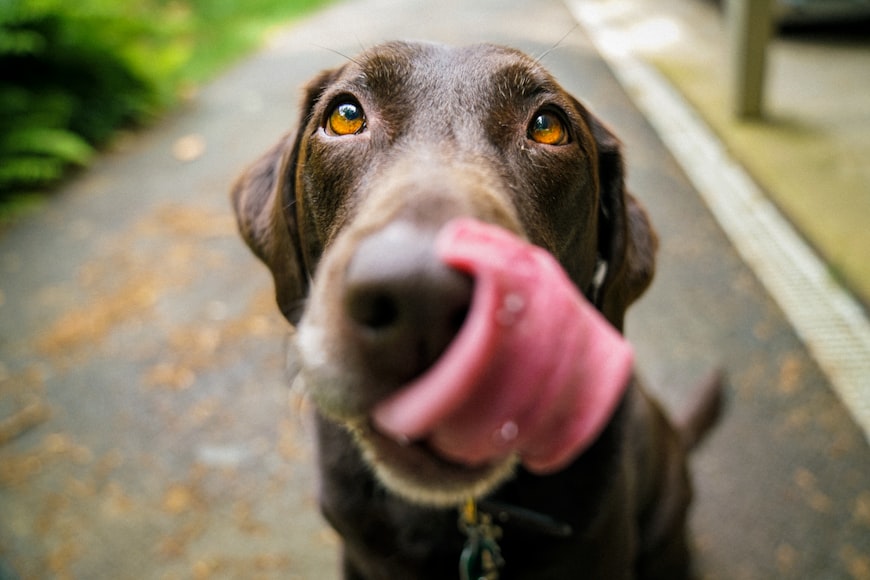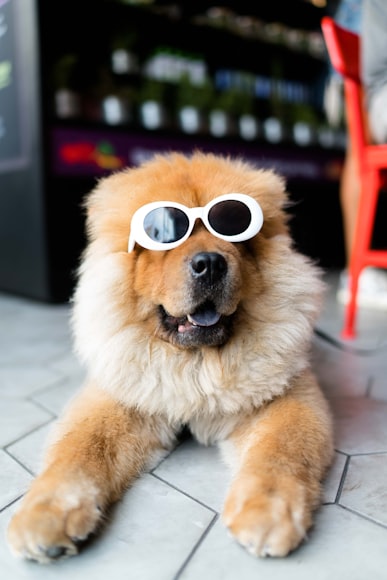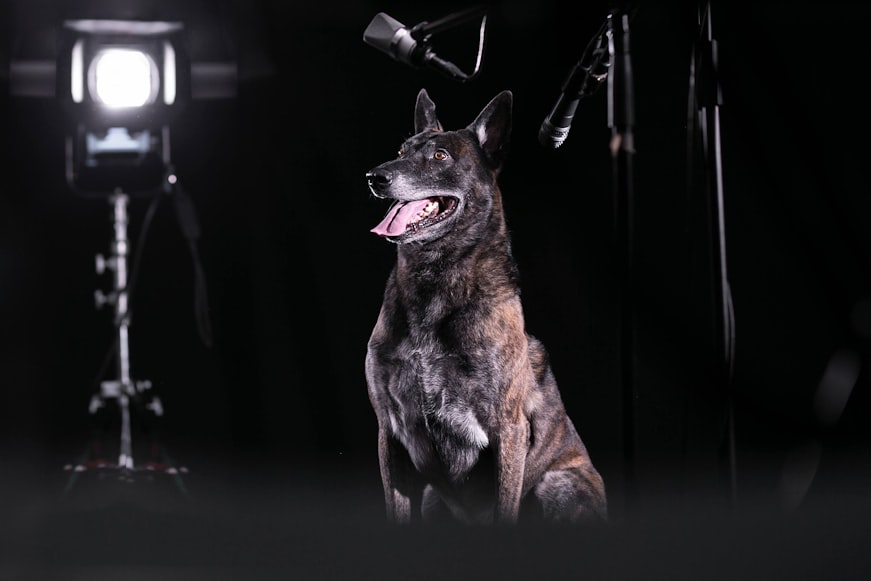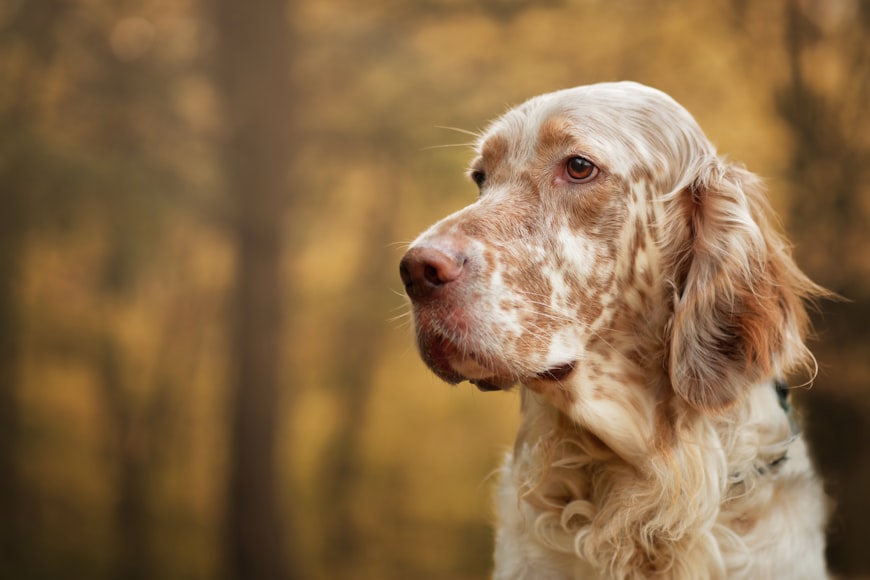Dog Skin is Dry: Causes and Solutions

As a dog owner, you want your furry companion to be happy, healthy, and comfortable. However, when your dog’s skin becomes dry, it can be an uncomfortable and frustrating problem for both of you. Dry skin can cause itching, flaking, and even infections, so it’s important to address the issue promptly.
Causes of Dry Skin in Dogs
There are several potential causes of dry skin in dogs, including:
- Environmental factors: Dry air, low humidity, and extreme temperatures can all contribute to dry skin.
- Allergies: Environmental allergens, such as pollen, dust mites, and mold spores, can trigger an allergic reaction that causes dry, itchy skin.
- Nutritional deficiencies: A diet that is deficient in essential fatty acids or other nutrients can lead to dry skin.
- Thyroid issues: Hypothyroidism, a condition where the thyroid gland does not produce enough thyroid hormone, can cause dry, flaky skin.
- Parasites: Mites, fleas, and other parasites can irritate the skin and cause dry, itchy patches.
- Infections: Bacterial and fungal infections can also cause dry skin.
Solutions for Dry Skin in Dogs
Depending on the underlying cause, there are several things you can do to help address dry skin in your dog:
- Moisturize the skin: Applying a hypoallergenic moisturizer to your dog’s skin can help to soothe and hydrate the dry areas. Look for products that contain natural ingredients, such as aloe vera, oatmeal, or coconut oil.
- Increase humidity: Using a humidifier in your home can help to add moisture to the air and reduce dryness.
- Provide a well-balanced diet: Feed your dog a diet that is rich in essential fatty acids, such as omega-3 and omega-6 fatty acids. These fatty acids are important for maintaining the skin’s health and moisture.
- Address allergies: If you suspect that your dog is allergic to something, consult with your veterinarian to determine the allergen and develop a treatment plan.
- Treat parasites: If your dog has parasites, treating the infestation will help to relieve the dry, itchy skin.
- Consider thyroid testing: If you think your dog may have a thyroid issue, your veterinarian can perform a thyroid test to confirm the diagnosis and prescribe medication if necessary.
Preventing Dry Skin in Dogs
Once you have addressed the underlying cause of your dog’s dry skin, there are some steps you can take to help prevent it from recurring:
- Use gentle products: Avoid using harsh shampoos and soaps on your dog’s skin. Instead, opt for gentle, pH-balanced products that are designed for sensitive skin.
- Bathing frequency: Bathing your dog too frequently can strip away natural oils and exacerbate dryness. Limit baths to once a week or as needed.
- Provide adequate exercise: Regular exercise helps to keep your dog’s skin healthy and hydrated. Aim for 30-60 minutes of exercise per day.
- Monitor your dog’s diet: Make sure your dog is eating a well-balanced diet that meets their nutritional needs. If you are considering changing your dog’s diet, consult with your veterinarian first.
Conclusion
Dry skin in dogs can be a frustrating problem, but it can be managed with the right treatment and prevention strategies. By understanding the potential causes of dry skin and taking the necessary steps to address them, you can help your dog achieve a healthy and comfortable coat.
Causes of Dry Skin in Dogs

As a dog pet blogger, it’s essential to understand the causes of dry skin in our beloved furry friends. This condition can be frustrating for dogs and owners alike, causing itching, discomfort, and, if left untreated, more severe health issues.
1. Allergies:
Allergies are a major culprit behind dry skin in dogs. These can be triggered by various substances, including:
- Food allergies: Certain foods, such as wheat, corn, and beef, can cause allergic reactions in dogs.
- Environmental allergies: Pollen, dust mites, and other environmental allergens can irritate the skin.
- Insect bites: Fleas, mosquitoes, and other insects can cause allergic reactions and trigger dry skin.
2. Parasites:
Parasites, such as fleas, ticks, and mites, can feed on the dog’s skin, causing irritation and dryness. These parasites can also spread infections that contribute to skin problems.
3. Hormonal imbalances:
Hormonal imbalances, such as hypothyroidism, can affect the dog’s skin health. Thyroid hormones play a role in regulating skin cell turnover and oil production. Imbalances in these hormones can lead to dry, flaky skin.
4. Environmental factors:
Environmental factors can also contribute to dry skin in dogs. Here are some common triggers:
- Low humidity: During winter months or in dry climates, the air lacks moisture, which can dehydrate the dog’s skin.
- Excessive bathing: Bathing your dog too frequently can strip the skin of its natural oils, making it prone to dryness.
- Hot temperatures: High temperatures can draw moisture from the skin, leading to dryness and cracking.
Additional Causes:
Besides the primary causes mentioned above, there are other factors that can contribute to dry skin in dogs:
- Age: Senior dogs may experience thinning skin and reduced oil production, resulting in dryness.
- Underlying medical conditions: Certain medical conditions, such as liver or kidney disease, can affect skin health and cause dryness.
- Medications: Some medications, such as corticosteroids, can have side effects that include dry skin.
Symptoms of Dry Skin in Dogs:
Recognizing the symptoms of dry skin in dogs is crucial for prompt treatment:
- Itching and scratching
- Flaky or scaly skin
- Redness and irritation
- Dull or dry coat
- Hair loss
- Cracked or bleeding skin
Treatment and Prevention:
Treating and preventing dry skin in dogs depends on identifying the underlying cause. Here are some common approaches:
- Eliminate allergens: If allergies are suspected, testing can help determine the triggering allergen. Avoiding these triggers is essential for controlling dry skin.
- Control parasites: Regular flea and tick prevention measures should be taken to protect your dog from parasites that can cause skin irritation.
- Address hormonal imbalances: If an underlying hormonal imbalance is identified, veterinary treatment will be necessary to restore hormonal balance.
- Moisturize the skin: Applying a gentle, hypoallergenic moisturizer to the dog’s skin can help hydrate and soothe dry skin.
- Use a humidifier: During dry months, using a humidifier at home can help increase humidity and alleviate dry skin.
- Avoid over-bathing: Bathing your dog too frequently can further dry out the skin. Limit baths to once a month or less, if necessary.
Conclusion:
Dry skin in dogs is a common issue that can be caused by various factors, including allergies, parasites, hormonal imbalances, and environmental conditions. By understanding the causes and implementing appropriate treatment and prevention measures, you can help your furry friend maintain healthy and comfortable skin. If you notice symptoms of dry skin in your dog, don’t hesitate to consult with your veterinarian for a proper diagnosis and treatment plan.
Symptoms of Dry Skin

As dog owners, we cherish the bond we share with our furry companions, and their well-being is paramount. Maintaining their skin health is crucial for their overall comfort and happiness. Dry skin is a common problem in dogs, causing a range of symptoms that can be a source of discomfort for our beloved pets. In this comprehensive guide, we will delve into the telltale signs of dry skin and explore effective treatment remedies to restore your dog’s skin to its natural radiance.
Symptoms of Dry Skin: A Cause for Concern
Recognizing the symptoms of dry skin in dogs is the first step towards addressing this prevalent condition. These symptoms can vary in severity and may include:
-
Flaking: Dry skin often manifests as small, white flakes that resemble dandruff. These flakes can be scattered throughout the dog’s coat or concentrated in certain areas, such as the ears or base of the tail.
-
Itching: Intense itching is a classic symptom of dry skin in dogs. Dogs may scratch or rub themselves excessively against furniture, carpeting, or the ground, causing further irritation and inflammation.
-
Redness: Inflamed skin often appears red, irritated, and sore. Dogs with dry skin may experience redness on the extremities, such as the paws, ears, and tail, or more widespread redness across the body.
-
Hair Loss: In severe cases, dry skin can lead to hair loss. The coat may become thin, brittle, or patchy as the skin becomes increasingly dry and irritated.
Underlying Causes: Delving into the Roots of Dry Skin
The causes of dry skin in dogs are multifaceted and can include both external and internal factors. Some common culprits include:
-
Environmental Factors: Extreme temperatures, low humidity, and exposure to harsh chemicals can contribute to dry skin by stripping the skin of its natural oils and moisture.
-
Underlying Medical Conditions: Certain underlying health conditions, such as allergies, thyroid disorders, and hormonal imbalances, can disrupt the skin’s normal moisture balance, leading to dryness.
-
Improper Grooming: Overbathing or using harsh shampoos and conditioners can damage the skin’s natural protective barrier, increasing its susceptibility to dryness.
-
Nutritional Deficiencies: A lack of essential fatty acids and other nutrients in a dog’s diet can contribute to dry and flaky skin.
-
Seasonal Changes: Dry skin is often more prevalent during winter months when the air is drier and temperatures are colder.
Treatment Strategies: Restoring Skin Health
Treating dry skin in dogs requires a holistic approach that addresses both the underlying causes and the symptoms. Here are some effective treatment options:
-
Moisturizing: Regular use of a hypoallergenic, fragrance-free moisturizer can help restore the skin’s natural moisture balance and soothe irritation.
-
Oatmeal Baths: Oatmeal has soothing and anti-inflammatory properties that can relieve itching and redness. Oatmeal baths can be given twice weekly to provide gentle relief.
-
Dietary Modifications: Ensuring your dog receives a high-quality diet rich in essential fatty acids and other skin-nourishing nutrients can promote healthy skin and reduce dryness.
-
Treat Underlying Conditions: If an underlying medical condition is contributing to dry skin, it is crucial to seek veterinary care to address the root cause.
-
Avoid Harsh Chemicals: Limit exposure to harsh chemicals, such as detergents, cleaners, and pesticides, which can further irritate dry skin.
-
Environmental Management: Maintain a comfortable indoor environment with moderate humidity to prevent excessive drying of the skin.
Prevention: Proactive Measures for Healthy Skin
While treating dry skin is essential, preventing it from recurring is equally important. Here are some proactive measures you can take:
-
Regular Bathing: Bathe your dog every 4-6 weeks using a mild, hypoallergenic shampoo designed for dogs. Avoid overbathing, as it can strip the skin of its natural oils.
-
Moisturize Regularly: Apply a hypoallergenic moisturizer to your dog’s skin twice weekly, especially during dry months.
-
Dietary Balance: Ensure your dog receives a balanced diet rich in essential fatty acids, vitamins, and minerals.
-
Environmental Control: Maintain a comfortable home environment with moderate humidity and minimize exposure to harsh chemicals.
-
Regular Veterinary Checkups: Schedule regular veterinary checkups to monitor your dog’s overall health and address any underlying medical conditions that may contribute to dry skin.
Conclusion
Dry skin in dogs is a common condition with various causes and symptoms. By understanding the underlying factors and implementing effective treatment strategies, you can restore your dog’s skin to its natural health and prevent further discomfort. Remember to prioritize prevention by maintaining a healthy diet, avoiding harsh chemicals, and providing a comfortable environment. As always, consult with your veterinarian for personalized guidance and to rule out any underlying medical conditions that may require additional treatment. Together, we can ensure that our furry companions enjoy healthy, vibrant skin for a lifetime of love and companionship.
Diagnosis

Dry dog skin is a common problem that can cause discomfort and irritation for your furry friend. The condition can be caused by a variety of factors, including environmental allergies, food allergies, parasites, and certain medical conditions. If you suspect that your dog has dry skin, it is important to take them to the vet for a proper diagnosis and treatment plan.
Symptoms of Dry Dog Skin
The most common symptoms of dry dog skin include:
- Flaky, itchy skin
- Redness and irritation
- Dandruff
- Hair loss
- Sores or scabs
Diagnosis of Dry Dog Skin
Your vet will begin by performing a physical examination of your dog to look for signs of dry skin and any underlying medical conditions. They may also perform the following tests:
- Skin scrapings: This test involves taking a small sample of skin cells from your dog’s skin to look for parasites, such as mites or ringworms.
- Blood tests: Blood tests can help to rule out certain medical conditions that can cause dry skin, such as thyroid disease or allergies.
Treatment for Dry Dog Skin
The treatment for dry dog skin will depend on the underlying cause of the condition. If your dog has environmental allergies, your vet may recommend avoiding the allergens as much as possible. If your dog has food allergies, your vet may recommend switching to a hypoallergenic diet. If your dog has parasites, your vet will prescribe medication to kill the parasites.
In addition to treating the underlying cause of dry skin, your vet may also recommend the following treatments:
- Moisturizing shampoos and conditioners: These products can help to soothe and moisturize dry skin.
- Anti-itch sprays or creams: These products can help to relieve itching.
- Omega-3 fatty acid supplements: These supplements can help to improve the health of your dog’s skin and coat.
Prevention of Dry Dog Skin
There are a few things you can do to help prevent dry dog skin, including:
- Bathing your dog regularly: Bathing your dog regularly can help to remove dirt and allergens from their skin.
- Using a humidifier: A humidifier can help to add moisture to the air, which can help to prevent dry skin.
- Feeding your dog a healthy diet: A healthy diet can help to keep your dog’s skin and coat healthy.
- Avoiding harsh chemicals: Harsh chemicals, such as those found in some cleaning products, can irritate your dog’s skin.
Conclusion
Dry dog skin is a common problem that can cause discomfort and irritation for your pet. If you suspect that your dog has dry skin, it is important to take them to the vet for a proper diagnosis and treatment plan. With proper treatment, your dog’s skin can be restored to health and comfort.
Treatment Options

Dry, itchy skin is a common problem in dogs, causing discomfort and irritation for our beloved companions. Understanding the underlying causes and exploring effective treatment options can help restore their skin’s health and alleviate their distress.
Causes of Dry Skin
Numerous factors can contribute to dry skin in dogs, including:
- Environmental allergens (pollen, dust mites)
- Food allergies
- Fungal or bacterial infections
- Hypothyroidism
- Cushing’s syndrome
- Excessive bathing
- Harsh shampoos or grooming products
Treatment Options
Depending on the underlying cause, several treatment options are available to address dry skin in dogs:
1. Anti-Allergy Medications
If allergies are suspected, antihistamines or corticosteroids can help reduce inflammation and itchiness associated with allergic reactions.
2. Antibiotics
Bacterial or fungal infections may require treatment with antibiotics to eliminate the underlying infection and restore skin health.
3. Topical Ointments
Topical ointments containing moisturizers, anti-inflammatory agents, or anti-itch medications can provide immediate relief and soothe irritated skin.
4. Bathing with Special Shampoos
Bathing with specialized shampoos formulated for dry skin can help cleanse and hydrate the skin, restoring its natural moisture barrier. Look for shampoos that contain soothing ingredients such as oatmeal, aloe vera, or ceramides.
5. Moisturizing Powders
Moisturizing powders can be applied directly to the dog’s skin to absorb excess moisture and create a protective layer.
Important Considerations
- Diagnosis: It’s crucial to consult with a veterinarian to determine the underlying cause of dry skin before initiating treatment. They can perform diagnostic tests to rule out underlying medical conditions.
- Hypoallergenic Diet: If food allergies are suspected, your veterinarian may recommend a hypoallergenic diet to eliminate potential allergens.
- Regular Grooming: Regular brushing and bathing can help remove allergens and dead skin cells, improving the skin’s condition.
- Avoid Harsh Chemicals: Avoid using harsh shampoos or grooming products that can further irritate dry skin.
- Monitor and Adjust: Closely monitor your dog’s response to treatment and adjust as necessary. If the condition worsens or does not improve, seek veterinary guidance promptly.
Preventing Dry Skin
While some cases of dry skin are unavoidable, certain measures can help prevent its occurrence:
- Use hypoallergenic bedding and laundry detergent.
- Vacuum and clean regularly to reduce allergens.
- Provide a balanced diet free from known allergens.
- Avoid over-bathing or using harsh shampoos.
- Protect your dog from harsh environmental conditions like extreme heat or cold.
By understanding the causes of dry skin in dogs and exploring effective treatment options, we can alleviate our beloved companions’ discomfort and restore their skin’s health, ensuring their happiness and well-being.
Home Remedies
Dry, itchy skin can be uncomfortable for our beloved canine companions, affecting their well-being and overall happiness. While there are various underlying causes for dry skin in dogs, from allergies to environmental factors, implementing natural home remedies can provide soothing relief and restore your dog’s coat to its healthy, vibrant state. Here are some effective home remedies that you can try to alleviate your dog’s dry skin:
1. Coconut Oil: A Natural Moisturizer
Coconut oil is a rich source of fatty acids that possess both antibacterial and moisturizing properties. Its emollient qualities help to soothe irritated skin, reduce inflammation, and create a protective barrier against dryness. Regular application of coconut oil to your dog’s skin can help to restore its moisture balance and prevent further irritation.
2. Oatmeal Baths: Soothing and Anti-Inflammatory
Oatmeal has long been hailed for its calming and anti-inflammatory effects on the skin. Its colloidal properties help to relieve itching and irritation, while its natural antioxidants combat inflammation. Soaking your dog in a warm oatmeal bath can provide immediate relief and promote skin healing.
3. Apple Cider Vinegar: Restoring pH Balance
Apple cider vinegar is a natural astringent that helps to balance the pH levels of your dog’s skin. Its mild acidity can help to reduce the growth of bacteria and control excessive yeast, which can often contribute to skin dryness and irritation. Diluted apple cider vinegar can be applied topically to your dog’s skin or added to their bathwater.
4. Aloe Vera: Cooling and Antibacterial
Aloe vera is a potent natural remedy with soothing, cooling, and antibacterial properties. Its gel-like substance contains antioxidants and enzymes that help to reduce inflammation, moisturize the skin, and relieve itching. Applying fresh aloe vera gel directly to your dog’s dry areas can provide instant cooling relief and promote skin healing.
5. Honey: Antibacterial and Healing
Honey is a natural antibacterial and antifungal agent that can help to combat infections and promote wound healing. Its thick, viscous consistency creates a protective layer on the skin, shielding it from further irritation and aiding in the regeneration process. Applying honey to your dog’s affected areas can help to soothe dry, itchy skin and accelerate the healing process.
6. Olive Oil: Rich in Vitamins and Antioxidants
Olive oil is an excellent source of vitamins and antioxidants, including vitamin E, which is essential for healthy skin. Its emollient properties help to moisturize and protect the skin, while its antibacterial properties can help to combat infections. Massaging your dog’s skin with olive oil can provide nourishment and relief from dryness.
Tips for Using Home Remedies:
- Perform a patch test before applying any remedy to your dog’s skin to ensure they are not allergic.
- Dilute apple cider vinegar and honey before use to avoid skin irritation.
- Use fresh aloe vera gel whenever possible, as processed aloe products may contain additives that can irritate your dog’s skin.
- Monitor your dog’s response to the remedy closely and discontinue use if any adverse reactions occur.
- Consult with a veterinarian if your dog’s dry skin persists or worsens, as it may indicate an underlying medical condition requiring professional treatment.
Conclusion
Dry skin in dogs can be a frustrating condition that can cause discomfort and distress. By incorporating these effective home remedies into your dog’s skincare routine, you can provide soothing relief, restore the health of their skin, and keep their coat looking its best. Remember to approach any remedies with caution, test them thoroughly, and consult with a veterinarian if your dog’s skin condition does not improve. Your dog deserves a life free from discomfort, and with the right combination of care and remedies, you can help them achieve that.
Dietary Changes
Dry, flaky, or itchy skin in dogs can be a frustrating issue for both pets and their owners. While there are multiple underlying causes of skin dryness, dietary changes can play a significant role in improving skin health. Here are essential dietary strategies to address dry dog skin:
1. Omega-3 Fatty Acids: The Moisture Protectors
Omega-3 fatty acids, particularly EPA (eicosapentaenoic acid) and DHA (docosahexaenoic acid), are essential nutrients for maintaining healthy skin. They act as natural emollients, keeping the skin hydrated and supple. Include foods rich in omega-3s in your dog’s diet, such as:
- Fatty fish (e.g., salmon, mackerel, sardines)
- Fish oil supplements
- Grass-fed meat
- Flaxseed oil
- Hemp seed oil
2. Probiotics: The Gut-Skin Connection
The gut microbiome, consisting of trillions of microorganisms, has a direct influence on skin health. Probiotics, the beneficial bacteria in the gut, produce antimicrobial compounds and strengthen the skin’s natural barrier function. Feeding your dog probiotic-rich foods or supplements can improve digestion, reduce inflammation, and promote a healthy skin microbiome.
- Yogurt (plain, unsweetened)
- Kefir
- Fermented vegetables (e.g., sauerkraut, kimchi)
- Probiotic supplements
3. Vitamin E: The Antioxidant Guardian
Vitamin E is a powerful antioxidant that protects the skin from environmental stressors, such as UV radiation and pollution. It helps reduce inflammation and prevents oxidative damage to skin cells. Include foods high in vitamin E in your dog’s diet:
- Leafy greens (e.g., spinach, kale, collard greens)
- Nuts and seeds (e.g., almonds, walnuts)
- Olive oil
- Vitamin E supplements
4. Hydration: The Cornerstone of Healthy Skin
Adequate water intake is crucial for maintaining skin health. Ensure your dog has access to fresh, clean water at all times. Dehydration can exacerbate skin dryness and increase the likelihood of infections.
5. Avoid Allergenic Foods:
Certain foods, such as dairy, wheat, corn, and soy, can trigger allergic reactions in dogs. If your dog experiences skin irritation after eating specific foods, consult your veterinarian to determine potential allergens and eliminate them from their diet.
6. Consider a Skin-Specific Diet:
Veterinary-prescribed skin-specific diets are formulated to support the specific nutritional needs of dogs with dry skin. These diets may contain higher levels of omega-3 fatty acids, probiotics, and other ingredients that promote skin health.
7. Consult a Veterinarian:
Before making any dietary changes, consult with your veterinarian to determine the underlying cause of your dog’s dry skin and receive personalized recommendations. A veterinarian can also rule out any underlying medical conditions that may be contributing to the skin issue.
Conclusion:
By incorporating dietary changes that focus on omega-3 fatty acids, probiotics, vitamin E, hydration, allergy avoidance, and skin-specific diets, you can support your dog’s skin health from within. A balanced and nutritious diet plays a vital role in maintaining a healthy coat and reducing the symptoms associated with dry skin. Remember to consult with your veterinarian for professional guidance and customized recommendations tailored to your dog’s individual needs.
Importance of Prevention
As a dog pet blogger, it’s imperative to address the common issue of dry skin in our furry companions. Dry skin can cause significant discomfort, leading to itching, flaking, and even infection. Prevention is key in managing this condition and ensuring our dogs’ well-being. Here’s a comprehensive guide to the importance of preventive care for dry dog skin:
Understanding Dry Dog Skin
Dry dog skin occurs when the skin’s natural moisture barrier is compromised, leading to reduced hydration and elasticity. This can result from several factors, including:
- Environmental factors: Harsh weather conditions, such as cold, dry air and excessive sun exposure, can dehydrate the skin.
- Allergies: Allergens, such as pollen, dust, and certain foods, can trigger skin inflammation and dryness.
- Underlying medical conditions: Hypothyroidism, Cushing’s disease, and certain skin infections can also contribute to dry skin.
Regular Bathing
Regular bathing is essential for maintaining a healthy skin microbiome and removing dirt and allergens that can irritate and dry the skin. However, it’s crucial to avoid over-bathing, as this can strip the skin of its natural oils and further exacerbate dryness.
- Frequency: Bathe your dog once or twice a month, or as recommended by your veterinarian.
- Water temperature: Use lukewarm water to avoid scalding or drying out the skin.
- Shampoo: Choose a gentle, hypoallergenic shampoo specifically designed for dogs with dry skin. Avoid harsh detergents and fragrances.
- Moisturizing aftercare: Apply a dog-safe moisturizer or leave-in conditioner to replenish moisture and soothe dry skin.
Grooming
Regular grooming is another important aspect of preventing dry dog skin. Brushing helps remove dead skin cells, reduces shedding, and distributes natural oils throughout the coat.
- Frequency: Brush your dog at least once a week, or more frequently for long-haired breeds.
- Brushing technique: Use a soft-bristled brush to avoid irritating the skin. Brush in the direction of hair growth and remove any mats or tangles gently.
- Detangling sprays: If your dog has a thick or tangled coat, use a detangling spray to make brushing easier and prevent breakage.
Avoiding Allergens
If your dog is prone to allergies, it’s essential to identify and avoid potential triggers. This may require veterinary testing, such as skin or blood tests, to determine specific allergies.
- Environmental allergens: Keep your dog away from dusty or heavily pollinated areas. Use a HEPA air filter to reduce allergens in your home.
- Food allergies: Try eliminating certain foods from your dog’s diet under veterinary supervision to identify any potential allergens.
- Other allergens: Be aware of other potential allergens, such as certain grooming products, fabrics, and flea and tick treatments.
Other Preventive Measures
In addition to regular bathing, grooming, and avoiding allergens, consider the following preventive measures to protect your dog’s skin:
- Use a humidifier: During cold, dry months, use a humidifier in your home to add moisture to the air and prevent skin dehydration.
- Provide shade: Keep your dog out of the sun during the hottest hours of the day to prevent sunburn.
- Apply sunscreen: If your dog has thin hair or is exposed to prolonged sun exposure, apply a dog-safe sunscreen to protect against UV damage.
- Manage underlying medical conditions: If your dog has an underlying medical condition that contributes to dry skin, consult your veterinarian for appropriate treatment.
Signs of Dry Dog Skin
If you suspect your dog has dry skin, pay attention to the following signs:
- Itching and scratching
- Flaking or dandruff
- Redness or inflammation
- Crusty or scabby patches
- Dull or brittle coat
If you notice any of these symptoms, contact your veterinarian promptly for diagnosis and treatment.
Conclusion
Preventing dry dog skin is crucial for maintaining your dog’s comfort and overall well-being. By implementing regular bathing, grooming, avoiding allergens, and other preventive measures, you can reduce the risk of this common condition and keep your furry friend’s skin healthy and happy. Remember, if your dog experiences any signs of dry skin, do not hesitate to consult your veterinarian for professional guidance and treatment.
When to Seek Veterinary Help
Dry skin in dogs can be an uncomfortable and irritating condition. While most cases can be easily managed with home care, there are times when it’s essential to seek professional veterinary assistance. Here are some warning signs that indicate a veterinary visit is necessary:
Severe Itching
Excessive itching is one of the most common symptoms of dry skin in dogs. While some scratching is normal, persistent and intense itching can indicate a more severe underlying condition. If your dog is unable to stop scratching, particularly if it’s accompanied by visible skin damage, seek veterinary attention.
Open Sores
Severe itching can lead to the formation of open sores on your dog’s skin. These sores can become infected and cause further discomfort. If you notice any open sores or wounds on your dog’s body, especially in areas that are excessively scratched, consult a veterinarian immediately.
Infection
Dry skin can become infected, especially if it’s not treated properly. Signs of infection include redness, swelling, heat, and discharge from the affected areas. If you suspect that your dog’s dry skin has become infected, seek veterinary help promptly.
When to Seek Veterinary Help
In addition to the above warning signs, there are other circumstances that warrant a veterinary visit for dry dog skin:
- Your dog’s symptoms are not improving: If home remedies have not provided relief within a few days, it’s important to consult a veterinarian.
- Your dog is showing signs of discomfort: Dry skin can cause significant discomfort for dogs. If your dog is restless, agitated, or unable to sleep due to itching, seek veterinary attention.
- Your dog has a history of allergies: Allergies are a common cause of dry skin in dogs. If your dog has a history of allergies, it’s essential to seek professional help to determine the underlying cause and receive appropriate treatment.
What to Expect at the Vet
During your veterinary visit, the veterinarian will perform a physical examination of your dog’s skin. They may also ask about your dog’s diet, lifestyle, and grooming routine. The veterinarian may recommend diagnostic tests, such as skin scrapings or biopsies, to determine the underlying cause of the dry skin.
Treatment Options
The treatment for dry dog skin depends on the underlying cause. Common treatment options include:
- Topical medications: Over-the-counter or prescription topical medications, such as shampoos, conditioners, and sprays, can help soothe and moisturize dry skin.
- Special shampoos: Medicated shampoos specifically designed for dogs with dry skin can help remove dead skin cells and reduce inflammation.
- Oral medications: In severe cases, oral medications may be prescribed to address underlying infections or allergies.
- Dietary changes: A hypoallergenic diet can be recommended if allergies are suspected to be the cause of the dry skin.
Prevention
While some cases of dry skin are unavoidable, there are several measures you can take to prevent or minimize the condition:
- Provide a balanced diet: A healthy diet rich in essential fatty acids can help maintain healthy skin.
- Regular grooming: Brushing your dog regularly can remove dead skin cells and distribute natural oils throughout the coat.
- Avoid harsh soaps and chemicals: Use mild shampoos and conditioners that are formulated for dogs. Avoid using human products, as they can irritate your dog’s skin.
- Control allergies: If your dog has known allergies, take steps to avoid triggers and follow your veterinarian’s recommendations for managing the condition.
By paying attention to your dog’s skin condition and seeking veterinary help when necessary, you can help manage and alleviate dry skin, ensuring your furry companion has a healthy and comfortable life.
























